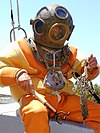Felix Hoppe-Seyler
Felix Hoppe-Seyler | |
|---|---|
 Felix Hoppe-Seyler | |
| Born | Ernst Felix Immanuel Hoppe December 26, 1825 |
| Died | August 10, 1895 (aged 69) |
| Nationality | German |
| Scientific career | |
| Fields | physiology chemistry |
| Institutions | Halle Leipzig |
Ernst Felix Immanuel Hoppe-Seyler (26 December 1825 – 10 August 1895), né Felix Hoppe, was a German physiologist and chemist, and the principal founder of the disciplines of biochemistry and molecular biology.
Hoppe-Seyler was born in Freyburg an der Unstrut in the Province of Saxony. He originally trained to be a physician in Halle and Leipzig, and received his medical doctorate from Berlin in 1851. Afterwards, he was an assistant to Rudolf Virchow at the Pathological Institute in Berlin. Hoppe-Seyler preferred scientific research to medicine, and later held positions in anatomy, applied chemistry, and physiological chemistry in Greifswald, Tübingen and Strasbourg. At Strasbourg, he was head of the department of biochemistry, the only such institution in Germany at the time.[1]
His work also led to advances in organic chemistry by his students and by immunologist Paul Ehrlich. Among his students and collaborators were Friedrich Miescher (1844–1895) and Nobel laureate Albrecht Kossel (1853–1927).[1]
Background
He was the son of the Freiburg superintendent (bishop) Ernst August Dankegott Hoppe. His mother died when he was six years old, and his father three years later. After he became an orphan, he lived for some time in the home of his older sister Klara and her husband, the Annaburg pastor Georg Seyler, a member of the noted Seyler family, a son of the pharmacist and Illuminati member Abel Seyler the Younger and a grandson of the theatre director Abel Seyler. He eventually entered the orphan asylum at Halle, where he attended the gymnasium. In 1864 he was formally adopted by Georg Seyler[2] and added the Seyler name to his birth name.[3][4]
In 1858 he married Agnes Franziska Maria Borstein, and they had one son, Georg Hoppe-Seyler, who became a professor of medicine in Kiel.
Contributions

Felix Hoppe-Seyler, a physiologist and chemist, became the principal founder of biochemistry. His text Physiological Chemistry became the standard text for this new branch of applied chemistry.[5]
His numerous investigations include studies of blood, hemoglobin, pus, bile, milk, and urine. Hoppe-Seyler was the first scientist to describe the optical absorption spectrum of the red blood pigment and its two distinctive absorption bands. He also recognized the binding of oxygen to erythrocytes as a function of hemoglobin, which in turn creates the compound oxyhemoglobin. Hoppe-Seyler was able to obtain hemoglobin in crystalline form, and confirmed that it contained iron.
Hoppe-Seyler performed important studies of chlorophyll. He is also credited with the isolation of several different proteins (which he referred to as "proteids"). In addition, he was the first scientist to purify lecithin and establish its composition. In 1877 he founded the Zeitschrift für Physiologische Chemie (Journal for Physiological Chemistry), and was its editor until his death in 1895.[1] He died in Wasserburg am Bodensee in the Kingdom of Bavaria.
Selected written works
- Handbuch der physiologisch und pathologisch-chemischen Analyse (1858). Digital 8th edition from 1909 by the University and State Library Düsseldorf
- Physiologische Chemie (4 volumes, 1877–81).
- Zeitschrift für Physiologische Chemie (1877–1921).
See also
References
- ^ a b c Jones, Mary Ellen (September 1953). "Albrecht Kossel, A Biographical Sketch". Yale Journal of Biology and Medicine. 26. National Center for Biotechnology Information: 80–97. PMC 2599350. PMID 13103145.
- ^ Neue deutsche Biographie Vol. 9 S. 615
- ^ Theologischer Jahresbericht, Vol. 2, p. 200–201
- ^ Albert P. Mathews, "The Life and Work of Felix Hoppe-Seyler," in Popular Science Monthly, Volume 53, August 1898
- ^ "Hoppe-Seyler, Felix". Complete Dictionary of Scientific Biography. Retrieved 8 May 2015.
External links
- Photo, biography, and bibliography in the Virtual Laboratory of the Max Planck Institute for the History of Science
- Chem-342 Introduction to Biochemistry
- Biography and photos at the website of Biological Chemistry (a journal founded by Felix Hoppe-Seyler)
- 1825 births
- 1895 deaths
- German chemists
- German physiologists
- People from the Province of Saxony
- Martin Luther University of Halle-Wittenberg alumni
- Leipzig University alumni
- Humboldt University of Berlin alumni
- Humboldt University of Berlin faculty
- University of Greifswald faculty
- University of Tübingen faculty
- University of Strasbourg faculty

